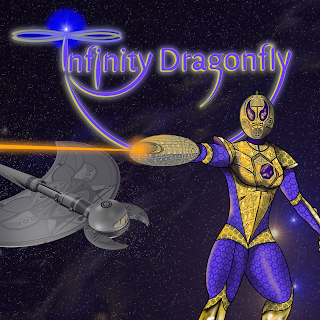Review: Venus
Venus has a thick atmosphere of mostly carbon dioxide, creating a runaway greenhouse effect that creates a surface temperature of over 800° Celsius. Add to that an atmosphere 90 times that of sea level on Earth plus sulphuric acid rain... it starts to resemble hell rather than paradise, and the irony of the name 'Morning Star' - associated with a certain fallen angel by the name of Lucifer the 'light bringer' - becomes uncomfortably appropriate.
You would have to be pretty darn desperate - some may say insane - to try and colonise such a savagely inhospitable environment, would you not?
This is, nevertheless, the goal of our valiant protagonists in Venus by writer Rick Loverd and artist Huang Danlan. Mars having been claimed by the China-led Pan Pacific Alliance, Venus is the only remotely viable option for NASA to target in search of much-needed resources for a depleted Earth.
May 15th, 2150: automated drones have already gone ahead and built habitation modules on the Venusian surface. The US spacecraft Mayflower is now bringing the first humans to set foot on the challenging world.
Shortly after entering orbit, an explosion damages the ship and kills the captain. Pilot Pauline Manashe is next in line in the chain of command and has to pull together the survivors as the ship crashes on the surface. With the reactor core critical, they have to abandon ship and head for the nearest automated dome. It is a mere five hundred yards away, but Venus is the mother of all inhospitable environments. Can they survive the journey? And was the initial disaster an accident or an act of deliberate sabotage?
The drama plays out as Manashe struggles to unite the survivors. The military contingent bristles at the thought of a civilian being in charge of their mission. The saboteur is still at large and their next move could come at any time.
The artwork is sharp and conveys the complex emotional notes in the characters' interactions and the atmospheric environments. The battle here has two fronts; the lethal conditions of the planet and the equally perilous flaws in human nature. Once again the eternal question arises: can humanity survive any better on strange new worlds when it brings with it its own destructive imperfections?
Can there ever be a Utopia, or is self-sabotage too deeply wired in our DNA for this to ever be more than a dream?
Our heroine must find a way to win the war on both fronts, and time is running out...
Zak Webber
Twitter - @sfcomicartist Instagram - @sfcomicartist
JOIN US ON FACEBOOK! - SCI-FI COMIC NEXUS
*****
***
*




Comments
Post a Comment